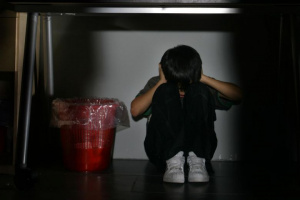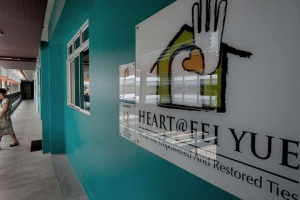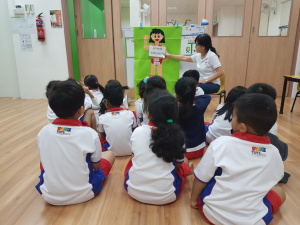Guide to: Reporting Child Abuse in Singapore

Child abuse is any action that endangers or compromises a child’s physical or emotional well-being. Forms of child abuse include - physical abuse, neglect, sexual abuse, and emotional and psychological abuse.[1][2] In Singapore, the Children and Young Persons Act (CYPA) provides the legal framework to protect those sixteen years old and younger. Under the act, the relevant authorities are permitted to intervene if a child is abused or neglected.[3][4] This entry covers Singapore’s policy on reporting child abuse - including how child protection concerns are assessed and acted upon.
Disclaimer: In the situation where a child’s life is in danger, call the police at 999 immediately.[5][6]
Identifying child protection concerns
Child abuse cases in Singapore are classified based on a spectrum of severity. At each level, there are specific authorities assigned to handle the cases.
Low child protection concerns
Concerns of the lower spectrum refer to cases when parents or caregivers neglect their children’s basic needs - such as adequate food, clothing or medical care, due to issues such as emotional and financial stress.[7] The next step would be to seek help from Family Service Centres (FSCs). FCSs can solve the root of the problem by providing financial assistance or counselling to help parents better deal with their stressors and to meet the needs of their children.[8][9] As reported in 2019, there are 47 FSCs located in HDB towns around Singapore.[10]
Medium child protection concerns

Mid-spectrum concerns refer to cases where parents or caregivers are using inappropriate or excessive disciplinary methods on their children.[11] For these cases, Child Protection Specialist Centres (CPSCs) are to step in and facilitate such matters.[12] The following table documents a list of CPSCs in Singapore.
| CPSC | Hotline | Operating hours | Refs. |
|---|---|---|---|
| Big Love Child Protection Specialist Centre | 6445 0400 | Monday - Friday (9AM - 6PM) | Website |
| HEART@Fei Yue Child Protection Specialist Centre | 6819 9170 | Monday - Friday (9.30AM - 5.30PM) | Website |
| PAVE Integrated Services for Individual and Family Protection Specialist Centre
(PAVE ISIFPSC)* |
6555 0390 | Monday - Friday (9AM - 1PM, 2PM - 6PM) | Website |
*Contact the PAVE ISIFPSC to receive information and referral services, Personal Protection Order (PPO) assistance and counselling.[13]
High child protection concerns
At the highest end of the spectrum are child protection concerns encompassing sexual abuse, severe neglect and serious injuries inflicted by the parent or caregiver.[14] In these situations, the children's lives are considered in danger. At this stage of severity, law enforcement agencies and/or the Child Protective Service (CPS) are required to intervene and conduct a social investigation.[15]
The following are real-life examples of high concern cases. In October 2016, a young couple confined their five-year-old son in a cat cage and inflicted life-threatening injuries on the boy. The boy was found with blunt force trauma to the head and severe burns. The child eventually succumbed to his injuries.[16][17] In January 2020, a domestic worker scalded her employer’s toddler by placing the child’s hand onto a heated pot on the stove.[18][19]
Reporting a high concern case
Hotlines
All members of the public are allowed and advised to engage the following helpline to report a high child protection concern.[20][21]
Child Protective Service helpline: 1800-777 0000 (Monday - Friday: 8.30AM - 6PM, Saturday: 8.30AM - 1PM)
Other than the above, individuals can also call the Singapore police.
Details to provide
When reporting, it is important to provide as much information as possible. Useful information include:[22]
(i) Description of injuries, abuse and/or neglect
(ii) Location of abuse
(iii) When and how did you find out about the abuse
(iv) The child(ren)’s name, age and address
(v) Name and age of alleged person causing harm, and their relationship to the child(ren)
(vi) Your name and contact details
Assessing child protection concerns

Singapore uses the Structured Decision Making (SDM) model to assess and categorise cases into the relevant groups across the spectrum. The guidelines facilitate efficient information-gathering and decision-making.[23][24] Such systems and tools allow the Child Protective Service (CPS) to focus on reports of abuse that require more intrusive forms of intervention.[25]
Structured Decision Making® (SDM®) in Singapore (2015 - Present)
In 2015, the Ministry of Social and Family Development (MSF) implemented the SDM® model in Singapore.[26] Owned by the United States' Children’s Research Center, National Council on Crime and Delinquency (NCCD), this support system is also used in Canada, Australia and Taiwan.[27][28][29]
The SDM model includes two guidelines that help professionals (eg. teachers and social service staff) to identify and assess child protection concerns.[30][31] These are the guidelines offered - (i) Sector-Specific Screening Guide (SSSG) and (ii) Child Abuse Reporting Guide (CARG).
Sector Screening Guide (SSSG)
Professionals who come in contact with children regularly such as teachers, doctors and social workers will use the SSSG to help them determine whether a child protection concern should be reported.[32]
Child Abuse Reporting Guide (CARG)
The CARG is used by professionals like school counsellors, medical social workers, senior social workers and agency heads. These are individuals who are trained or more familiar with child protection issues. CARG will help them decide whether to report a concern to the Child Protective Service (CPS). Cases that are not life-threatening will be funnelled to Family Service Centres (FSC)s and Child Protection Specialist Centres (CPSC)s.[33]
Screening and Response Priority Tool (SRPT)
The SRPT is a tool under the SDM® model and it is only used by Child Protective Service (CPS) to screen and determine whether or not to investigate the case.[34] The SRPT helps the CPS to evaluate the urgency of the concern.[35]
Statistics: Child abuse in Singapore
Total Enquiries Received by MSF (2015 - 2018)
The following table details the number of reports received by the Child Protective Service (CPS) over the years.
| Year | No. of Enquiries | Refs. |
|---|---|---|
| 2018 | 3,232 | [36] |
| 2017 | 3,344 | |
| 2016 | 3,035 | |
| 2015 | 2,022 |
After the introduction of the SDM® in 2015, professionals were better able to pick up safety concerns for a child and to seek the appropriate intervention. Over the years, MSF has also been increasing its public education efforts regarding child protection and family violence. These factors account for the rising numbers in recent years as compared to in 2015.[37][38]
References / Citations
- ↑ “Child Abuse”. Ministry of Social and Family Development. Accessed on 7 April 2020.
- ↑ “Protecting Children in Singapore”. Ministry of Social and Family Development. 2016. Accessed on 8 April 2020.
- ↑ “Children and Young Persons Act”. Singapore Statutes Online. December 1, 2001. Accessed on 8 April 2020.
- ↑ Rahimah Rashith. “MSF proposes extending Children and Young Persons Act to cover offenders aged 16 to 18”. The Straits Times. February 8, 2019. Accessed on 8 April 2020.
- ↑ “Reporting Of Suspected Child Abuse”. Ministry of Social and Family Development. Accessed on 7 April 2020.
- ↑ “MSF reviewing contact channels for reporting of child abuse”. The Straits Times. October 4, 2019. Accessed on 8 April 2020.
- ↑ “Child Protection Concerns exist on a spectrum”. Ministry of Social and Family Development. Accessed on 7 April 2020.
- ↑ “Networking of Agencies Keeping Children Safe”. Ministry of Social and Family Development. Accessed on 8 April 2020.
- ↑ “Family Service Centres in Singapore”. DadsforLife. Accessed on 8 April 2020.
- ↑ Rahimah Rashith. “Family service centres discuss ways to better work together”. The Straits Times. May 2, 2019. Accessed on 9 April 2020.
- ↑ “Protecting Children in Singapore”. Ministry of Social and Family Development. 2016. Accessed on 8 April 2020.
- ↑ “Community-Based Specialist Centres”. Ministry of Social and Family Development. Accessed on 8 April 2020.
- ↑ “Reporting Of Suspected Child Abuse”. Ministry of Social and Family Development. Accessed on 8 April 2020.
- ↑ “Protecting Children in Singapore”. Ministry of Social and Family Development. 2016. Accessed on 8 April 2020.
- ↑ “Child Protective Service”. Ministry of Social and Family Development. Accessed on 8 April 2020.
- ↑ Lam, Lydia. “Parents on trial for pouring scalding water on 5-year-old son until he died”. Channel News Asia. November 12, 2019. Accessed on 13 April 2020.
- ↑ Ng, Charmaine. “5-year-old scalded with hot water, confined in cage before his death: parents charged with murder”. The Straits Times. November 12, 2019. Accessed on 13 April 2020.
- ↑ Chang, Nicole. “Domestic worker arrested after toddler found with burns”. Channel News Asia. January 22, 2020. Accessed on 13 April 2020.
- ↑ Iau, Jean. “Maid arrested for hurting 16-month-old girl”. The Straits Times. January 23, 2020. Accessed on 13 April 2020.
- ↑ “Child Protective Service Helpline”. Ministry of Social and Family Development. Accessed on 8 April 2020.
- ↑ “MSF reviewing contact channels for reporting of child abuse”. The Straits Times. October 4, 2019. Accessed on 13 April 2020.
- ↑ “Details to report”. Ministry of Social and Family Development. Accessed on 8 April 2020.
- ↑ “Why is it important for professionals to use SSSG and CARG”. Ministry of Social and Family Development. Accessed on 8 April 2020.
- ↑ Rahimah Rashith. “Guides launched to help professionals working with children spot abuse cases”. The Straits Times. November 27, 2018. Accessed on 9 April 2020.
- ↑ Bryce, India., Robinson, Yolande., Petherick, Wayne. Child Abuse and Neglect: forensic issues in Evidence, Impact and Management. London: Elsevier, 2019. Retrieved from Google Books.
- ↑ Kok, Yufeng. “Guides launched to help professionals spot, report child abuse”. The New Paper. November 28, 2018. Accessed on 9 April 2020.
- ↑ “What is the Structured Decision Making® (SDM®) system?”. Ministry of Social and Family Development. Accessed on 8 April 2020.
- ↑ “The SDM® Model in Child Protection”. National Council on Crime & Delinquency. Accessed on 9 April 2020.
- ↑ “Celebrating SDM Successes in Georgia and California”. National Council on Crime & Delinquency. November 4, 2016. Accessed on 9 April 2020.
- ↑ “What are SSSG and CARG”. Ministry of Social and Family Development. Accessed on 8 April 2020.
- ↑ Kok, Yufeng. “Guides launched to help professionals spot, report child abuse”. The New Paper. November 28, 2018. Accessed on 9 April 2020.
- ↑ MSFCares. “Sector-Specific Screening Guide (SSSG) and Child Abuse Reporting Guide (CARG)”. YouTube. November 26, 2018. Accessed on 8 April 2020.
- ↑ MSFCares. “Sector-Specific Screening Guide (SSSG) and Child Abuse Reporting Guide (CARG)”. YouTube. November 26, 2018. Accessed on 8 April 2020.
- ↑ “What happens after a concern is reported?”. Ministry of Social and Family Development. Accessed on 8 April 2020.
- ↑ Bryce, India., Robinson, Yolande., Petherick, Wayne. Child Abuse and Neglect: forensic issues in Evidence, Impact and Management. London: Elsevier, 2019. Retrieved from Google Books.
- ↑ “Total Enquiries Received by MSF Child Protective Service (2015 - 2018)”. Ministry of Social and Family Development. Accessed on 8 April 2020.
- ↑ “Child Abuse Investigated by Abuse Type (2009 - 2018)”. Ministry of Social and Family Development. Accessed on 8 April 2020.
- ↑ Nabilah Awang. “The Big Read: Amid rising child abuse cases, the community needs to step up and be ‘busybodies’”. CNA. November 25, 2019. Accessed on 8 April 2020.